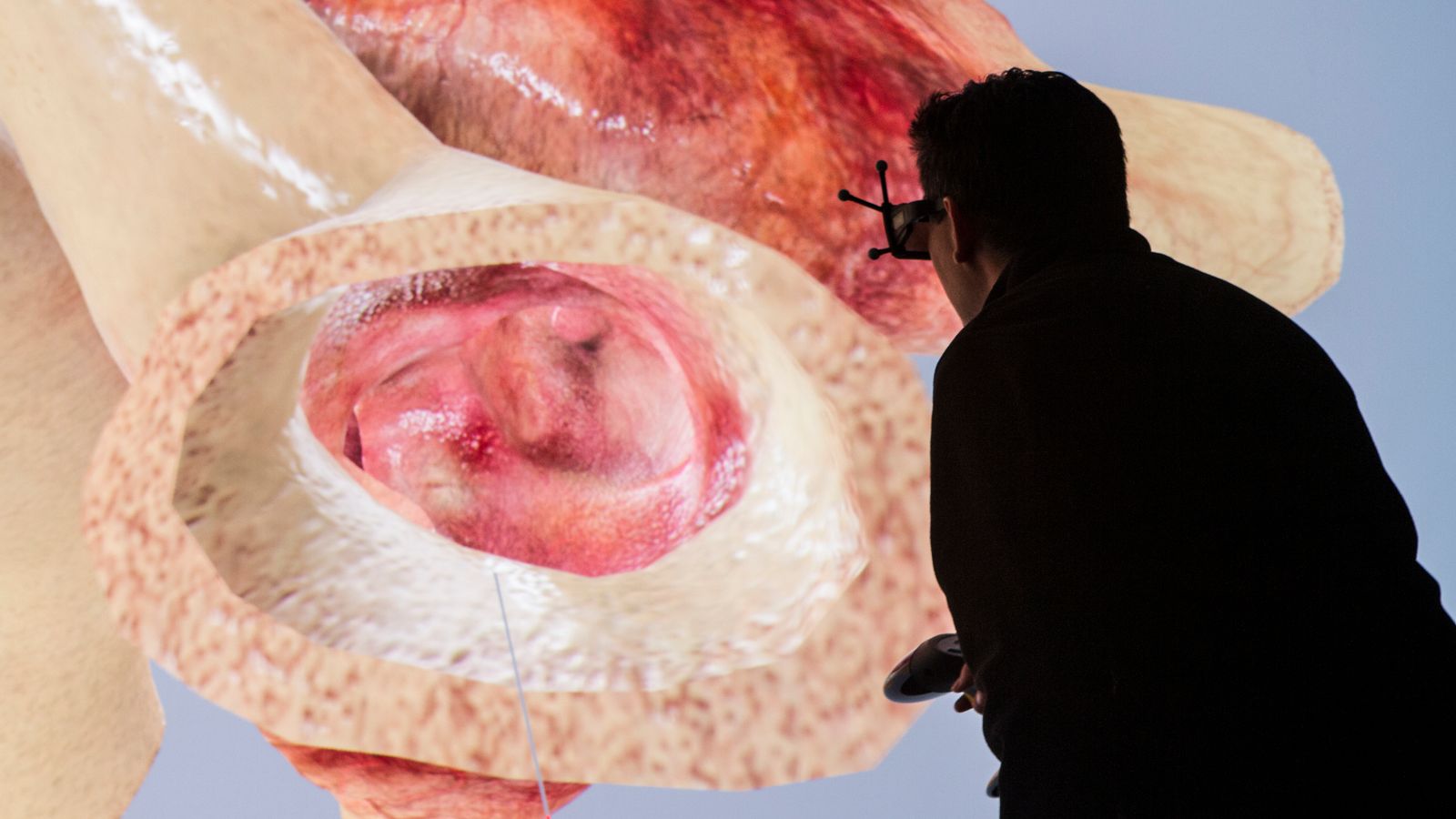Away from novelties like a smart bird feeder and camera-equipped oven, one corner of the world’s biggest technology event is inviting attendees to meet their virtual twin.
Set up in the Las Vegas Convention Center at the Consumer Electronics Show (CES), the ambitious “living heart” and “living brain” initiatives are the work of French software company Dassault Systemes.
Both are attempts to use the digital world to improve the physical one.
Much as an engineer would design an aeroplane or car on a computer in 3D before the physical work begins, the concept of a “digital twin” aims to predict how a person might perform in real-world scenarios.
In the case of Dassault, the goal is to apply the technology to health care.
“My daughter was born with a very rare clinical heart defect,” senior director Dr Steve Levine told Sky News.
“I watched, as most parents would, kind of helplessly, some of the best doctors really guessing what might work.
“It dawned on me that they really didn’t understand the function – and didn’t have tools to address things they had never seen before.
“If we can give an engineer a fully functioning jet to try out, why can’t we give a doctor a fully functioning heart?”
Visitors to the firm’s CES booth can strap on an augmented reality headset to hold, rotate, and squeeze 3D-printed replicas of a heart and brain.
More from CES 2023:
Is this the future of the electric car?
PlayStation unveils accessibility controller
The most eye-catching gadgets at the show
As they do it, their actions are mirrored on a digital recreation of themselves in real time, displayed on a connected touchscreen which measures their heart rate and projects it back on to the virtual clone.
The idea is to showcase what goes into the creation of a virtual twin, and how the results are being used to help doctors and surgeons in the field.
Speaking to Ian King Live, Dr Levine explained: “The way an engineer can predict how a car might crash, fix the weaknesses before it actually gets into production, we can now start to do that in health care.
“We can begin to predict how treatment will affect and be used on a real body before it is tried.
“With a virtual twin, you could perform a surgery beforehand, optimise the surgery, so when it’s time to go into the operating room, you can actually know you’ve got the best surgery and execute it.”
Researchers are already utilising the “living heart” to test potential treatments before they are carried out.
The technology is being used around the world, including at London’s Great Ormond Street Hospital.







